The Atlantic Intracoastal Waterway (AIWW, or for our purposes just the Atlantic ICW) and the Gulf Coast Intracoastal Waterway (GIWW) together technically span 4000 miles from Cape Ann, MA, to Brownsville, TX. You are not reading this to take the boat to Galveston or Boston. You are likely planning, or dreaming about, a passage south of the Bay to warmer winter weather.
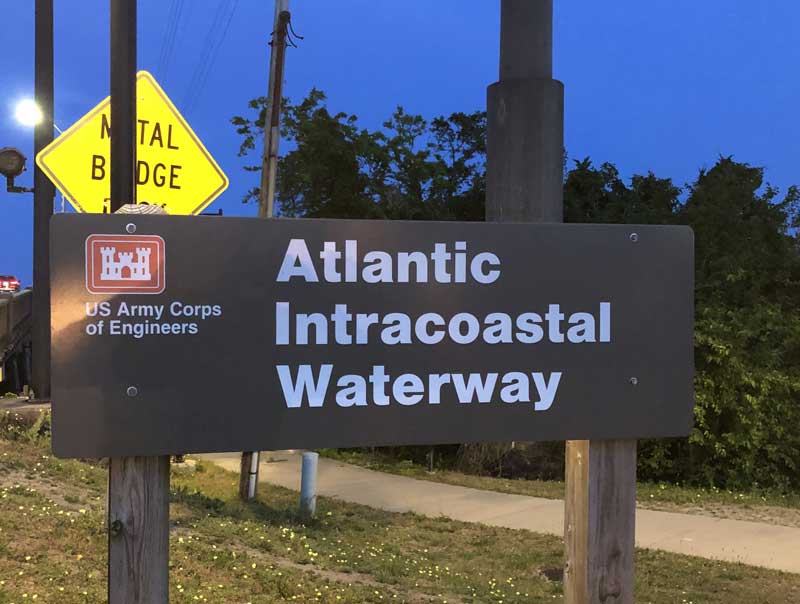
Good for you! To aid your trip we will focus on the 1000 or so ICW miles from Norfolk to southeastern Florida.
When you cruise the Chesapeake, you get used to well-marked navigation, shallow water, soft bottoms, mostly insignificant currents, and a tidal range that does not exceed a couple of feet. As you head south of Norfolk, some things change, and some stay the same.
Along the ICW the bottom is generally soft but much more likely to shift than we experience on the Bay. The many inlets from the Atlantic can change, seemingly overnight, after a storm of substance. Aids to Navigation (ATONs) are moved more often than we are used to on the Bay and temporary ATONs marking a new shoal are common. Marked channels are not uniform in depth. In addition, the tidal range can exceed eight feet and the accompanying currents can be a surprise.
We should take a moment to allay any concerns raised in the last paragraph. The ICW from Norfolk to Florida is the trip of a lifetime. The rich history, small towns and big cities, man-made canals, open sounds, miles of wetlands, and a cypress forest where the shoreline disappears into the trees make the trek enticing. The navigational challenges are manageable, with care.
Your authors have done this trip annually for years. Just for you, we will walk you through the current and habitual trouble spots in the thousand miles between Portsmouth’s Hospital Point, ICW Mile Marker 0 (MM 0), and southeast Florida. Read on.
For the most part the first couple hundred miles south of Norfolk are straight forward and without a particularly shallow bottom waiting to find your keel or prop. What follows is our list of places to take care. Taking care can include going slow, monitoring the tide, and following route guidance.
Some of the best route guidance comes from regular ICW cruiser and Waterway Guide Contributing Editor Robert “Bob” Sherer, also known on Facebook as “Bob423.” Bob publishes an ICW Cruising Guide annually and maintains a Facebook group that provides crowd sourced updates along with his observations on ICW conditions. The route graphics that follow are courtesy of Bob.
It is also well worth subscribing to East Coast Alerts from Mel and Tom Neale at boatus.com/subscribe. These alerts are published monthly by BoatUS and pushed out to subscribers via email. Here you can find USCG notices that include bridge operations, dredging operations, and much more.
Here are our “greatest hits” trouble spots (no pun intended):
Atlantic ICW Trouble Spots
NC, Bogue Sound, MM 227.
Shoaling to six feet. Depending on the wind direction, this area can lose a foot or more of depth. Dave’s boat draws five feet and he has touched bottom here twice.
NC, Browns Inlet, MM 237.
Right at the Inlet this area can shoal to three feet or less next to Green 61a. Check for updates after storms and severe wind.
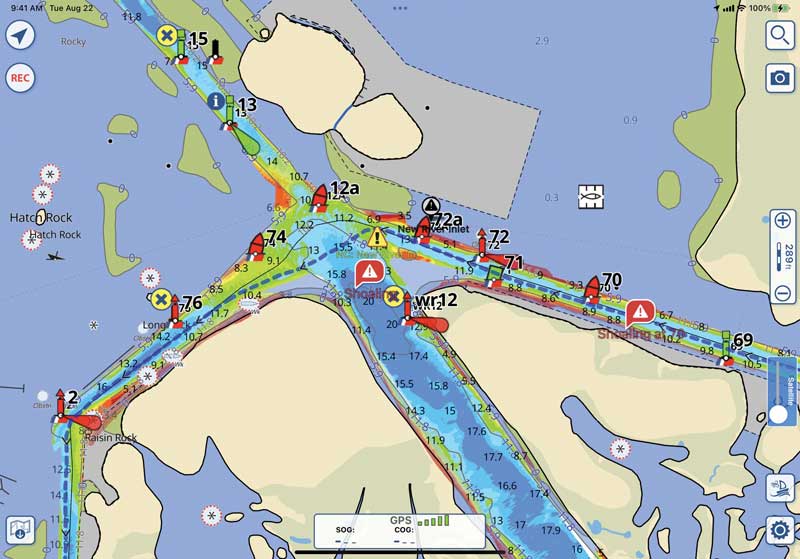
NC, New River Inlet, MM 246.
Just dredged. This is a constant trouble spot that can change overnight. Right now, because it has just been dredged, it’s a little wider than normal. Stay on Bob423 track and go slow.
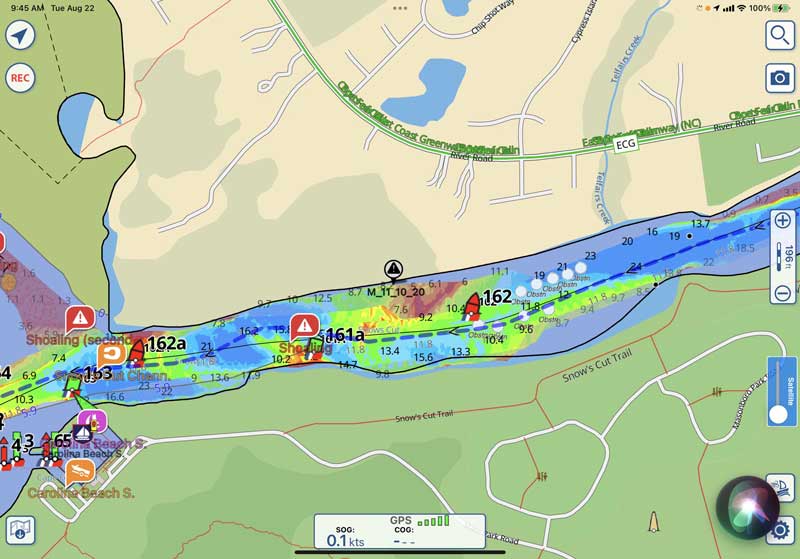
NC, Snows Cut, MM 295.
Scheduled to be dredged in spring 2024. It shoals fast due to the wicked current that is always present.
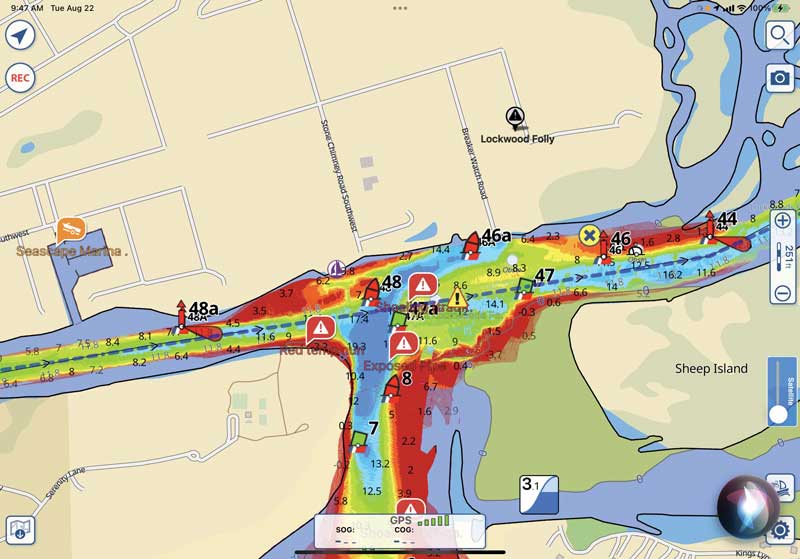
NC, Lockwood’s Folly, MM 320.
Just dredged. Be very careful here; the deepwater track through Lockwood’s Folly is often outside the northern buoys. Right now, it’s a straight shot but narrow.
NC, Shallotte Inlet, MM 329.
This is an annual trouble spot. Dave often sees less than a foot under the keel at low tide. Best to time the tides through here.
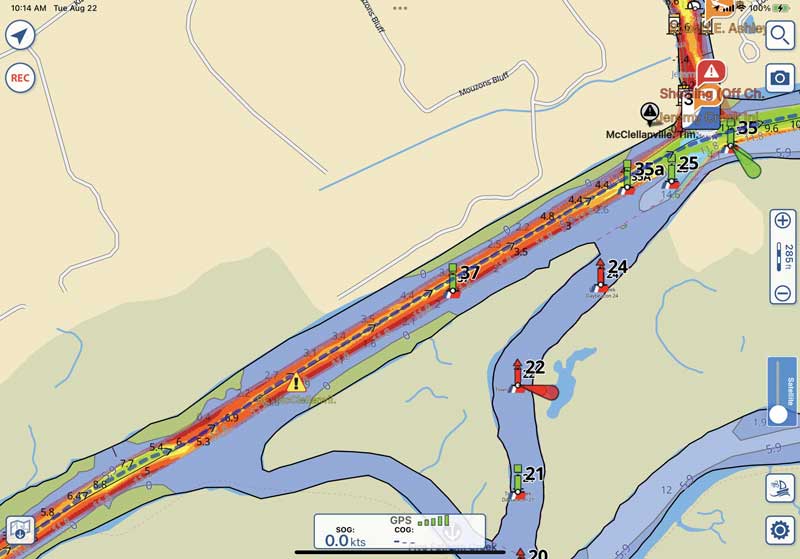
SC, McClellanville, MM 430 to MM 435.
Need to time the tides to pass here. Shoaling to five feet or less. Mike found, and wrapped about the prop and shaft, a ghost crab pot in the channel just inches off the bottom. Getting back underway required a tow and a diver with a hacksaw.
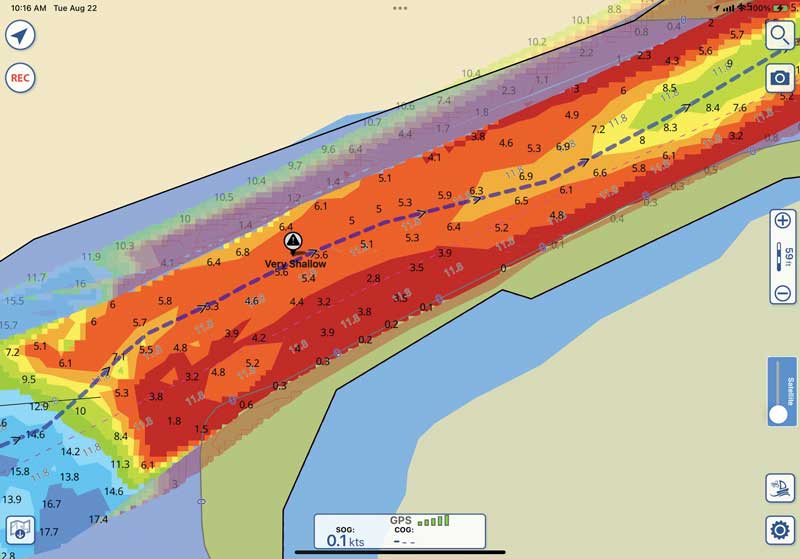
SC, just north and south of the Ben Sawyer Bridge, MM 459 to MM 464.
Need to time tides, shoaling to 3.4 feet. Sand is hard packed and will destroy a Pod drive if struck.
SC, Dawho River, MM 497.
Need to time the tides. Recently dredged, but shoals in quickly.
SC, Watts Cut, MM 503.
Need to time the tides. Recently dredged, but shoals in quickly.
SC, Ashepoo Cutoff, MM 514 to MM 518.
Just dredged; normally you need to time the tides. Shoaling to five feet within six months of dredging.
GA, Hell Gate, MM 602.
Very narrow passage. Shoaling to four feet. Passing another boat here should be avoided. Best to time the tides.
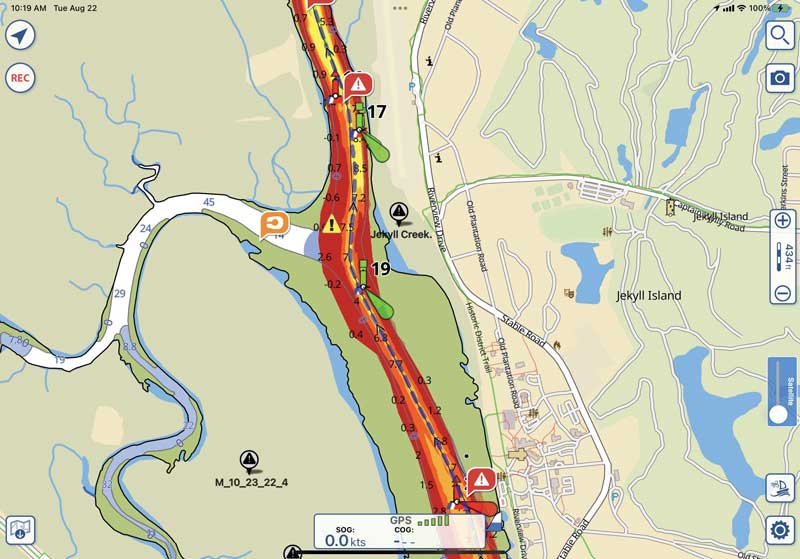
GA, Jekyll Creek, MM 681 to MM 684.
Need to time the tides. Even after being dredged this area is just plain shallow; only attempt on a half tide rising.
FL, Matanzas Inlet, MM 793.
Stay on Bob423 Track, very narrow, and very close to the beach. Mike found the bottom briefly here not believing the way out of line ATONs. We say, keep one foot on the beach and stay on Bob’s track.
FL, New Smyrna Beach, MM 846.
Stay on Bob423 track, very narrow near Red 18 and 18a.
So fellow ICW cruisers and cruisers to be, how do you feel? We hope you feel empowered and ready to tackle these modest navigational challenges to reap the rewards of cruising and of winters in a warmer place. Armed with the right tools to supplement your charts and multifunction displays, you can make this trip without incident. It has been done!
By Mike Pitchford and Dave Cerrone